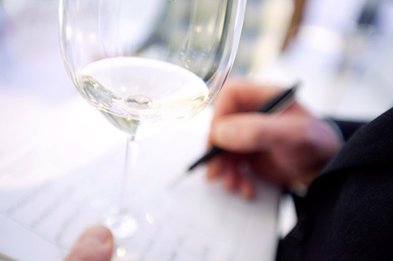Sparkling Rose: excluding Champagnes
With less stewed fruit and significantly fewer poor wines, it looks like some of the less-traditional regions are getting to grips with pink fizz
This Other Sparkling Rosé category is probably the clearest illustration of just how significant the whole Pink Revolution has been in altering the make-up of the wine world.
When this competition started, we’d be lucky to get any non-Champenois contenders for the Gold List at all. Whereas now there’s a healthy spread of medals not just from outside Champagne, but from all over the world.
 In the past, such medals have come at a price, with an awful lot of submissions being cast by the wayside in search of a few nuggets of gold. There was a certain amount of that this year, but it was done with far less grimacing than in the past, and this section attracted a good deal more positive comment than it has previously.
In the past, such medals have come at a price, with an awful lot of submissions being cast by the wayside in search of a few nuggets of gold. There was a certain amount of that this year, but it was done with far less grimacing than in the past, and this section attracted a good deal more positive comment than it has previously.
‘The ones we put through [for medals] were exceptionally good,’ said The Harrow at Little Bedwyn’s Roger Jones. ‘It surprised me how good non-Champagne rosé was. There was a lot of texture. It was hard to believe they were not Champagne.’
‘There were no terrible wines here,’ agreed consultant Peter McCombie MW. ‘It came down to singling out contrasting styles to go on the list.’
Freshness of fruit, at whatever level, was the key. Anything that was a bit sweet or jammy got a Bronx cheer and was swiftly removed, but there were hearteningly few of these. Certainly far fewer than usual. ‘The purity of fruit really stood out in a lot of these wines,’ said SWA veteran Tom Forrest of Vinopolis.
Proof of just how far some of the countries that you wouldn’t necessarily think of as being exponents of fizz have come with this style was seen in the medals. While France, Spain and Italy brought up the rear, the majority of medals went to Australia, Chile and the UK, with the latter two picking up the only Golds.
Although the two Gold Listed wines did very different jobs (one a crowd-pleaser, the other a highly elegant Champagne substitute), the one factor they had in common was that they both over-delivered for the money – not something that happens very often with pink fizz.
‘This is an outstanding wine,’ said Coq d’Argent’s Olivier Marie of the Undurraga Rosé. ‘Delicate, but expressive, this would be good by the glass, but also has a wow factor that is difficult to find at this level.’
The Sussex vineyard, Henners, meanwhile, deserves a special mention, adding a Rosé Gold to its vintage Blanc de Blancs and making for an impressive one-two.
‘It’s a great all-round style,’ said Bread Street Kitchen’s Ram Chhetri of the pink version. ‘Very enjoyable to drink but it also has complexity, good structure and some autolytic character – not OTT but enough to add interest and stand up to serious dishes like poached salmon.’
‘The cheaper wines were actually better value, offering more quality for the price, than the more expensive wines. This style needs to be fun, bringing bags of rosé flavour – strawberryish, an easy lunch style of wine.’
Courtney Stebbings, The River Café
‘Any customer opting for rosé has high expectations of the style so the wine has to deliver both on quality and character.’
Marco Feraldi, St James’s Hotel and Club